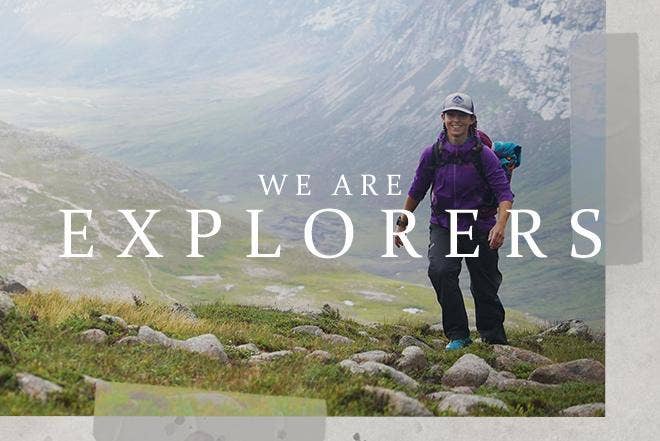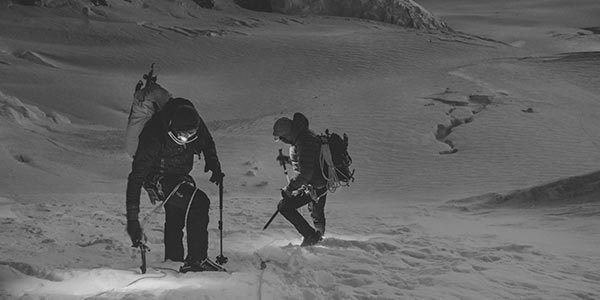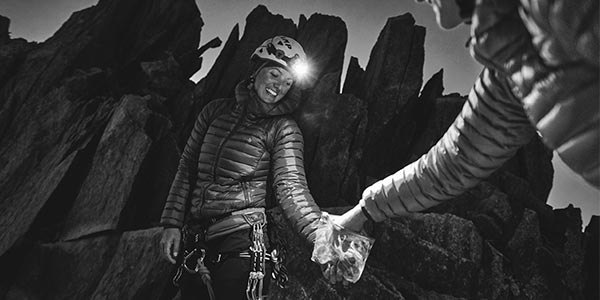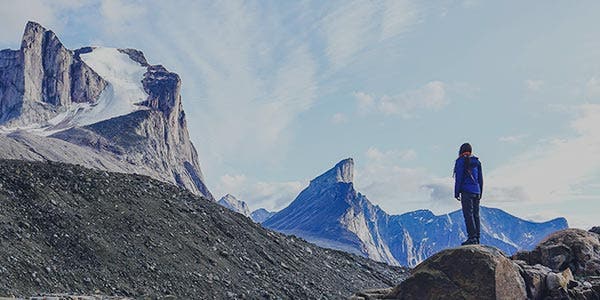

There is an old Chinese proverb which says that a journey of 1,000 miles begins with a single step. This became something that I thought about many times over the summer as I undertook Project 282: almost four months spent climbing all of Scotland’s Munros, in one go; unsupported and self-propelled. There was many a time that I caught myself panicking that I had perhaps bitten off more than I could chew, but I just had to break things down into smaller chunks and tackle each one as it came.
The Munros are the Scottish mountains over 3,000ft that were first listed by Sir Hugh Munro in 1891, in the Munro Tables, key in the history of peak bagging. The current list is maintained by the Scottish Mountaineering Club and the latest revision includes 282 Munros. My goal was to climb all the hills on this list, using my bike to travel between them, all under my own steam and without a support crew. This meant planning hiking routes which would return me to my bike, factoring in getting the food I needed to sustain myself in the hills, and sometimes splashing out on a night’s accommodation just because I was so desperate to have a shower and wash my clothes!
With a background in endurance sport, including Ironman triathlon and adventure racing, the multi-disciplinary facet of cycling between the hills really appealed to me. However, the reality was that I completely underestimated the challenge of cycling with a fully-loaded bike!
Over 120 days, I covered 2,605km with 36,311m of ascent on the bike, and a further 2,249km on foot with 162,296m of ascent. This distance drew a continuous line around much of Scotland from the most northerly Munro, Ben Hope, right down to the most southerly Munro, Ben Lomond on the bonnie banks of Loch Lomond, a mere hour’s drive from Glasgow. Climbing the Munros took me to some incredible parts of Scotland that I hadn’t previously visited and opened my eyes to even more possibilities for Scottish adventures.


I had a big (and rather scary!) lifestyle change a few years ago, when I turned my back on a promising career in accountancy to try and pursue a life that I loved, rather than simply living for the weekend. However, after completing Project282, the spreadsheet I have made would suggest that whilst you can take the girl out of accountancy, you can’t take the accountant out of the girl! Before leaving professional life in London, I agonised over what made me happy and two words came back every time: outdoors and active.
Since then, my life has become quite nomadic and I have spent winters in the Alps and Japan ski instructing, along with summers in Scotland and the Alps. The joy of seasonal jobs and a rather frugal winter, meant I was fortunate enough to be in a position whereby I could forgo a summer’s work for a big adventure.


Project 282 really was a journey into the unknown for me. I had no idea what I was letting myself in for. I had never tried to push myself for a period of longer than a week! I had climbed about 40 of the Munros before, mainly on day trips from Edinburgh when I lived there back in 2015. Last November, after I’d decided that I was going to attempt this continuous round, I took myself up to the Cairngorms for some big hill days with bothy nights between. I faced some brutal weather, with sleet, snow and strong winds, but it was an invaluable part of preparing myself mentally for the challenge ahead, especially with more hours of darkness than I find enjoyable on the hills.
The fact that I had been through those tough days, really helped me over the summer. If I was having a hard time, I would ask myself if it was as bad as last November. I would then tell myself that seeing as I had done worse; I could get through whatever was being thrown at me at the time. I’m not sure if that was always true, especially towards the end, but it helped all the same!


As a member of the British Adventure Collective, part of the goal of this trip was to showcase some of this amazing adventure landscape we have available to play with and to try and inspire others to go out and find their own adventures.
Throughout Project 282, I was fundraising for some incredible organisations which work tirelessly to keep people safe in the outdoors, raising over £3,000 for Scottish Mountain Rescue, the Mountain Bothy Association and Air Ambulances UK. Any donations to these charities are very much appreciated still and we would encourage people to donate using the links below (and that UK taxpayers would consider filling in a Gift Aid declaration to allow the charities to benefit from an additional 20% from the government).
Scottish Mountain Rescue | Mountain Bothy Association | Air Ambulance UK
Mountain Rescue teams throughout the UK do a fantastic job saving people when they are in tight spots on the hills and it was very reassuring to know they were out there, especially as I was on my own for much of the summer: of the 282 Munros, I climbed 221 alone. I had a SPOT Gen3 GPS device with an SOS button, that thankfully I didn’t have to press. It provided a huge amount of peace of mind (to both me and my family) to know that should I need help; I was just a button press away from arming the relevant Mountain Rescue team with my GPS location.
Air Ambulances are called into action only in the most critical circumstances, and the quick response times, advanced care given by paramedics on scene and rapid transfer to hospital can be the difference between life and death. Through the British Rescue Trust, we are supporting the Association of Air Ambulances Charity, which then distributes funds between all 21 air ambulance charities across the UK.


I was keen to support the fantastic work of the Mountain Rescue and Air Ambulances, being grateful to know they were there, but hoping to never have to call on their services. However, the work of the Mountain Bothy Association was something that I would become well acquainted with!
The bothies have each got so much character and I met some fascinating people in them along the way. These simple shelters became much more integral to Project 282 than I had envisaged, and I tried to visit as many of them as I could, without adding too many unnecessary extra miles.
The first thing I would do when I got a new map would be to mark on the Munros and then mark on the bothies to see how I could link things up. I ended up spending 20 nights in bothies and, of those, I was alone for 8. The sense of anticipation on approach to a bothy is always one of my favourite parts: I would wonder whether I would have company and if the bothy would have any particularly quirky features: my favourite was probably the hammock in Sourlies bothy on the shore of Loch Nevis.


In bad weather, it was much easier to keep my morale up when bound for a night in a bothy, rather than under canvas. As Storm Hector hit the Highlands, I was on my first multi-day expedition on foot, taking in 14 Munros in a large and remote circuit around Loch Monar. On the second evening of this six-day route, as winds of 80mph raged outside and rain hammered on the bothy windows, I was so glad to be tucked up snug and warm in my sleeping bag in Bendronaig Estate bothy, even if the respite was all too short. The next day I had to venture back out to face my first day tackling Munros in gale force winds, although it would not be my last day battling the wind.
I had made friends with two Swedish guys, both called Johann, who were on the Cape Wrath Trail at the bothy the night before. They were going in the opposite direction to me and had come from my next bothy, Maol-Bhuidhe. I had asked how they found the river crossing that I would need to do on my final approach to the bothy. They told me it was shallow and well served by stepping stones and they barely got their feet wet. However, as I approached that evening, the river was flowing strongly, swollen after the heavy rain of the previous 24 hours. I dithered on the bank searching for where it would be safest to cross, and eventually went for it, with the water up to mid-thigh level. I seriously regretted my lack of hiking poles (later rectified) and was being very careful with my foot placement, trying keep my feet as close to the bottom of the river as I could, to avoid being caught by the current. Overcome with relief as I placed my foot on firm ground on the other side, this was rather short-lived as the reality of my vulnerability in this great wilderness began to strike home…


Although I faced some really tough conditions, in general I was so lucky with the weather over Project 282: if you were going to pick a summer to be outside in Scotland and you looked through the last 30 years of records, you would pick this one, even if September was pretty brutal!
I had three weeks of amazing, settled weather at the start, when I really needed it. I was so far from anywhere and anyone that I knew. It was a pretty rough baptism of fire, even with the phenomenal weather. Successive days in the hills and cycling with all the weight took a lot of getting used to, but I was able to drink in the views of the stunning Scottish landscape whilst trying to ignore the screaming muscles.
Despite the wow-factor, my overriding memory of the first three weeks is still insatiable hunger! I would obsess about food whilst my body was readjusting to what I was asking from it. Happily, it didn’t take me too long to discover sticky toffee pudding as an easy and delicious way to up the calorie intake, made especially good after a big day on the hills.


The first day I went without doing a Munro was on day 11, by which point I had climbed 27 Munros. I was cycling round from the celebrated An Teallach (even having a brewery named in honour of it!) to Kinlochewe and my intention had been to do the cycle and then climb Slioch. It was about an 80km cycle in total and I ended up doing 60km before deciding to camp and do the hill the next day. I felt quite despondent about the fact I hadn’t done a Munro that day and it was hard not to beat myself up about it too much. I had ended up having quite a late start after my first night in a bed (courtesy of some kind motorcyclists I’d met in the restaurant the night before who had a spare top bunk in their room that they offered me!) and my first opportunity to have a hot shower and wash my clothes in hot water. When I did head out, it was such a beautiful cycle and a fantastic day that I couldn’t resist stopping off for a swim en route at the gorgeous Guignard Bay.
I had to learn to try not to look back and think about what I hadn’t managed to do that I had planned, but instead look forward and re-think and re-focus. I would ask myself: what is the plan now? At the start, I didn’t really know how my body would hold up, how my head game would be with so much time alone, or how long the whole thing would take. I had a friend’s wedding to go to at the start of October, so was aiming to finish before that, but apart from that, I didn’t really have a set time frame or finish date, which gave me a good degree of flexibility. In the end I had 20 days with no Munros, but some of those were walk-outs from the hills, some were big cycle days and some were mainly admin days (catching up on laundry and my Twitter feed!), with perhaps a small bit of distance earned on the bike. I only had 3 complete days off in the 120 days.
The human body really is amazing and within a few days, I became conditioned to climbing hills almost every day before hopping on my bike to go and find more even hills to climb. I even stopped being so hungry all the time. Trying to re-adjust to life after the Munros has actually been much harder than settling into Project282: things were very simple over the summer: eat, sleep, hike, bike, repeat.


Words by | Emily Scott
The is the first part of Project 282, Emily Scott's challenge to climb all 282 Munros in Scotland in one continuous round, unsupported and entirely self-propelled. You can read the rest of Emily's account in the second part of this series.




